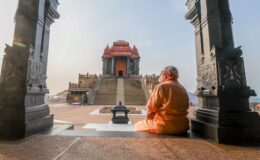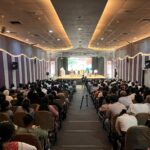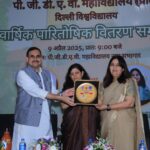Left and Congress repeatedly fail to see core reasons for their decline
- By : Anirban Ganguly
- Category : Articles

In a long interview, he once gave to a leading Bengali news channel in 2009, late former President of India Pranab Mukherjee made a very interesting observation. He was asked about Left politics in India and how the Left parties were in fact losing support base among the electorate. They must reflect on this, Mukherjee said, and compared the shrinking of the Left parties in India, which had once a prominent presence in Parliament and on the streets in certain parts of the country, with the growth and expansion of the Jana Sangh and later the BJP.
“A party which was founded by Dr Syama Prasad Mookerjee in 1951, the Jana Sangh, became Janata Party in 1977, again evolved as the Bharatiya Janata Party, in a journey of 47-48 years, could win 180 seats and form the government at the Centre, while the Communist parties, despite being here for so long, have not been able to go near replicating such a feat. They need to reflect on this…” The bane of Left politics in India and later now of Congress politics is that both these zones of Indian politics have repeatedly failed to assess the core reasons for their electoral and political downfall in the last six years.
In the case of Communist parties and the Left coalitions in India it has not been able to re-invent or re-state itself and in the case of the Congress it continues to baulk and sulk from its repeated defeat. Both these zones have now formed an alliance of delusion and defeat, and have been the spearheads of a politics which opposes for the mere sake of opposing.
While the Jana Sangh kept expanding and increasing its tally in Parliament over the decades, and put together, inch by inch and idea by idea, an ideological and political movement, which the BJP in later years and decades succeeded in amplifying and widening, the Left parties based their politics on incitement, conflict and the claptrap of ‘revolution.’ BK Kelkar, in his Pandit Deendayal Upadhyaya: Ideology and Perception, described it thus, “The special feature of the communist style of functioning was to intoxicate the people with the idea of revolution and to induce them to work and make sacrifices out of addiction to this opiate.
Their expression of such intoxicated madness used to be through exciting language…” As opposed to this, the Jana Sangh focused on its workers —karyakartas—as the BJP of today continues to do and concentrated on evolving a credible governance and political alternative. Upadhyaya insisted that the political worker must approach the people with the attitude of a teacher, a well-wisher and a friend. It was necessary for the Jana Sangh karyakarta, Upadhyaya argued, to develop an undiminished “affection for the down-trodden and a social commitment’, besides committedly working for social change.” In his many addresses to BJP karyakartas now as Prime Minister and during his days as general secretary in charge of the organisation of BJP, Narendra Modi never failed to insist upon the need of these defining dimensions.
Upadhyaya saw the acquiring of political power by a party as a means of implementing welfare schemes minus middlemen, between “the people and the administrative machinery”. He argued that workers who were “committed to the people, to the party, to principles and to the nation”, ought to have in them the commitment towards furthering such a welfare agenda directly among the people. In his exhortations to BJP workers on the party’s foundation on April 6 this year, Modi reminded them of this ideal, it had to be ‘Rashtra Pratham’ and ‘Seva’.
For Upadhyaya, a “good party” was one which was not “simply a collection of individuals” but was a “body corporate with a distinctive purposeful existence different from its desire to capture power”, in which the rank and file was devoted, disciplined, which was “wedded to certain ideals and framed policies to realise those ideals” through a “good and realistic programme.” It is these fundamental articulations that have been carried over for decades and ensured the emergence of the Jana Sangh and the BJP later as formidable political entities.
The BJP of today continues to be fundamentally the reflection of the Jana Sangh of yesteryears. In its karyakarta-centric approach, in its adherence to organisational functioning and renewal, in its ability to adapt itself to changing circumstances and to the needs of time, in its capacity to bring about regularly generational transitions and to recognise and nurture grassroots political talent, in its continuous ideological self-renewing and in its capacity to absorb new methods and frameworks while retaining its core driving fundamentals, in its connect to the sum of India’s aspirations and in its faith in her greatness that the BJP of today continues to reflect the ideals and aims of Jana Sangh. It is in this thread of continuity, patiently nurtured over decades by leaders and workers, that the key to the BJP’s resilience is to be found.

















